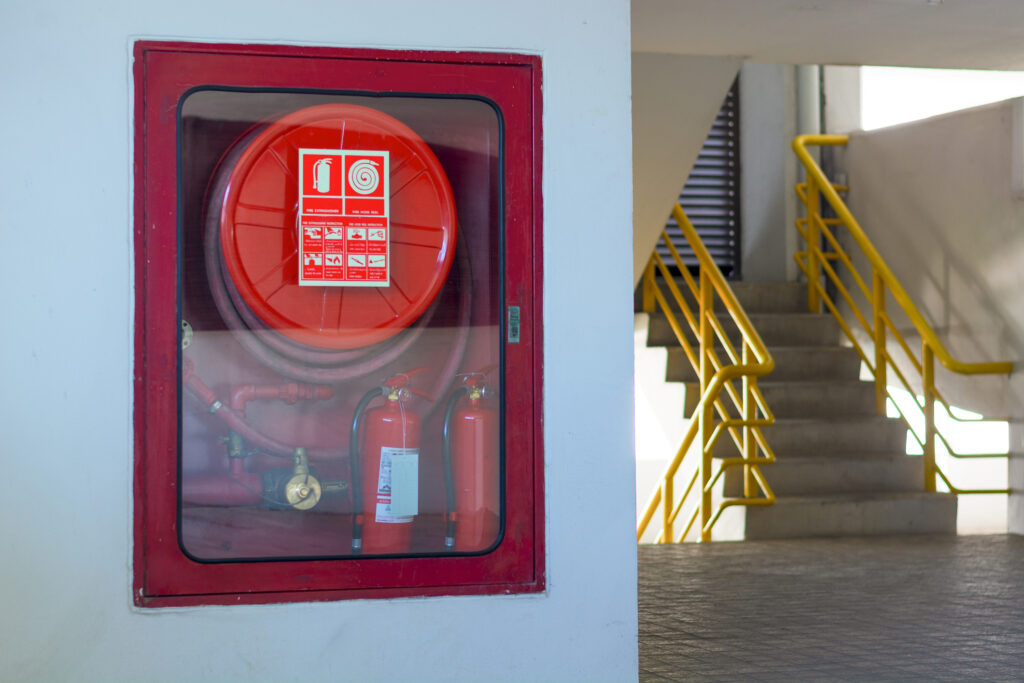
The International Code Council’s Role in Code Development and Building Safety
Building and fire regulations within the U.S. originally grew out of local and regional codes. These codes have evolved into the I-Codes and the associated code development process of today.
The issue of single exits in R-2 occupancies (multi-family residential dwellings), is generating significant discussion, particularly around a push to increase building height where a single exit is permitted. These conversations are happening at both state and local levels, often within state legislatures and local government bodies. Recently, two code change proposals addressing this matter have been introduced into the International Code Council’s code development process. The proposals are aimed at revising the International Building Code® (IBC) to increase the allowable height for single-exit multi-family residential buildings.
The Code Council does not take positions on proposed code changes to the International Codes® (I-Codes). The I-Codes are developed through a rigorous and transparent governmental consensus process. Offering an organizational opinion could disrupt the balance and fairness of this code development process. At the same time, it is also important for the building safety industry, policymakers and the public to have access to objective information and resources that capture the varying perspectives and professional discourse occurring around proposed code changes, including the concept of single exits in R-2 occupancies.
Beth Tubbs, PE, FSFPE, Vice President of Codes for the Code Council, recently joined industry colleagues as a presenter at the National Fire Protection Association (NFPA) Single Stairway Symposium. Her presentation covered the current IBC requirements for means of egress in R-2 occupancies, offering an overview of fire and life safety standards for multi-family residential buildings, along with a brief history of the single exit allowance within the IBC.

Collaborative Partnerships in Building Safety
In the U.S., the process of adopting, implementing, and enforcing these codes and standards is decentralized. This empowers the communities at a state or local level to ensure building safety while addressing specific local hazards, risks and objectives.
This also drives an inherent need for partnership and collaboration between model codes and standards development organizations (SDOs) such as NFPA, UL, ASTM International, the American Society of Heating, Refrigerating and Air-Conditioning Engineers (ASHRAE), the American Society of Mechanical Engineers (ASME), the American Society of Civil Engineers (ASCE) and other non-government organizations (NGOs) that have a stakeholder role in the building safety industry.
The Code Council publishes 15 model codes, including the IBC, that are optimized for adoption by all levels of government to regulate the design, construction and maintenance of buildings. New editions of these codes are updated and published every three years. Code Council members and staff are in constant and continuous contact with partners and industry experts to ensure the I-Codes are updated and coordinated across the model codes and standards community. The Code Council’s collaboration with NFPA to educate and inform building safety professionals about fire and life safety (including requirements in R-2 occupancies) is an important and timely example.
Building and fire regulations within the U.S. originally grew out of local and regional codes. These codes have evolved into the I-Codes and the associated code development process of today. This evolution was critical to facilitate consistency and safety nationally in the U.S. and as the I-Codes have seen increased adoption globally in over 100 countries worldwide. In fact, the creation of the Code Council and its current code development process was heavily influenced and encouraged by organizations such as the American Institute of Architects (AIA), American Gas Association (AGA), National Association of Home Builders (NAHB), National Multi Housing Council (NMHC) and Building Owners and Managers Association (BOMA) to support consistency in the design, construction, and safe performance of buildings.
Consensus and Leadership in Code Development
The Code Council’s code development process is built on collaboration, consensus and transparency. This approach, along with those used by its standards development partners, has proven resilient over time, shaped by the hard-earned lessons gained through centuries of iteration and evolution. Many of these lessons have influenced modern codes and standards, often driven by the tragedies of the past—such as the Triangle Shirtwaist Factory Fire, the Beverly Hills Supper Club Fire, the Station Nightclub Fire and the 9/11 attacks on the World Trade Center—where the loss of life underscored the need for stronger safety measures.
In today’s political environment, we see an increasing trend of legislating amendments to the model codes. The Code Council supports communities in both legislative and regulatory adoptions of model codes and standards and recognizes that adopting authorities make amendments to those adopted codes. But we encourage communities to, in the first instance, seek to address their needs through the Code Council’s code development process.
Code Council members, staff and those who participate in collaborative, consensus-based codes and standards development processes represent a wide range of backgrounds and expertise. Through the code development process, communities learn from each other and benefit from national expertise and input from experienced code experts who ensure all proposals are vetted for safety, affordability, practicality of implementation, interactivity and correlation with related codes and code provisions, and numerous additional considerations. Ultimately, the code development process ensures our nation’s model codes remain on the leading edge of building science to the benefit of all communities.
Bypassing the codes and standards development can lead to regulatory inconsistencies in the built environment—in direct contrast to the rationale for the development of model codes in the first place. It runs the risk of inadequate vetting that does not benefit from a full understanding of the hazards and intent of current building safety requirements focused on the preservation of human life. Sufficient vetting is particularly critical when considering changes to code provisions with a deep safety-based history in building codes.
The pace of regulatory change has certainly accelerated in recent years and the Code Council recognizes the importance of keeping pace with best practices, advancements in technology, and lessons learned. To do so, we have convened several Ad Hoc Committees, including multiple standing Code Action Committees (CACs) that hear, vet and respond to a multitude of complex issues facing the built environment. For example, Code Council CACs have addressed A2L (flammable) refrigerants, tall wood structures, energy storage systems, lithium-ion batteries, commercial use of hydrogen and accessory dwelling units to name a few.
The Code Council encourages involvement in the NGOs that support the health, safety and sustainability of the built environment in the U.S. and beyond. For more information about the Code Council and how to get involved in shaping the next edition of the I-Codes, please visit our website, here.
The National Fire Protection Association (NFPA) recently published an article discussing the push to increase the allowable height of residential buildings with a single exit stairwell. Click here to read more.







